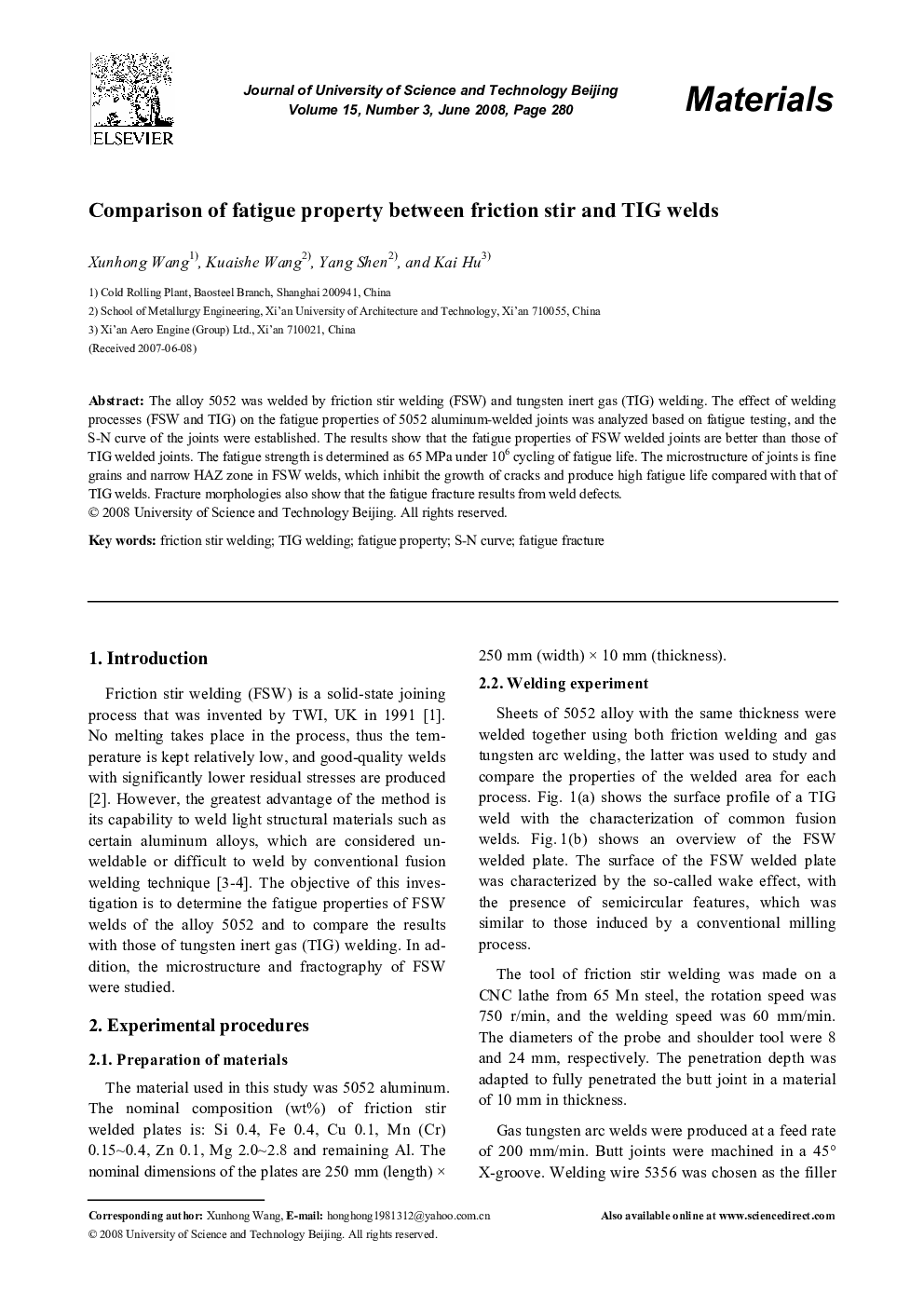| Article ID | Journal | Published Year | Pages | File Type |
|---|---|---|---|---|
| 1630459 | Journal of University of Science and Technology Beijing, Mineral, Metallurgy, Material | 2008 | 5 Pages |
Abstract
The alloy 5052 was welded by friction stir welding (FSW) and tungsten inert gas (TIG) welding. The effect of welding processes (FSW and TIG) on the fatigue properties of 5052 aluminum-welded joints was analyzed based on fatigue testing, and the S-N curve of the joints were established. The results show that the fatigue properties of FSW welded joints are better than those of TIG welded joints. The fatigue strength is determined as 65 MPa under 106 cycling of fatigue life. The microstructure of joints is fine grains and narrow HAZ zone in FSW welds, which inhibit the growth of cracks and produce high fatigue life compared with that of TIG welds. Fracture morphologies also show that the fatigue fracture results from weld defects.
Related Topics
Physical Sciences and Engineering
Materials Science
Metals and Alloys
Authors
Xunhong Wang, Kuaishe Wang, Yang Shen, Kai Hu,
